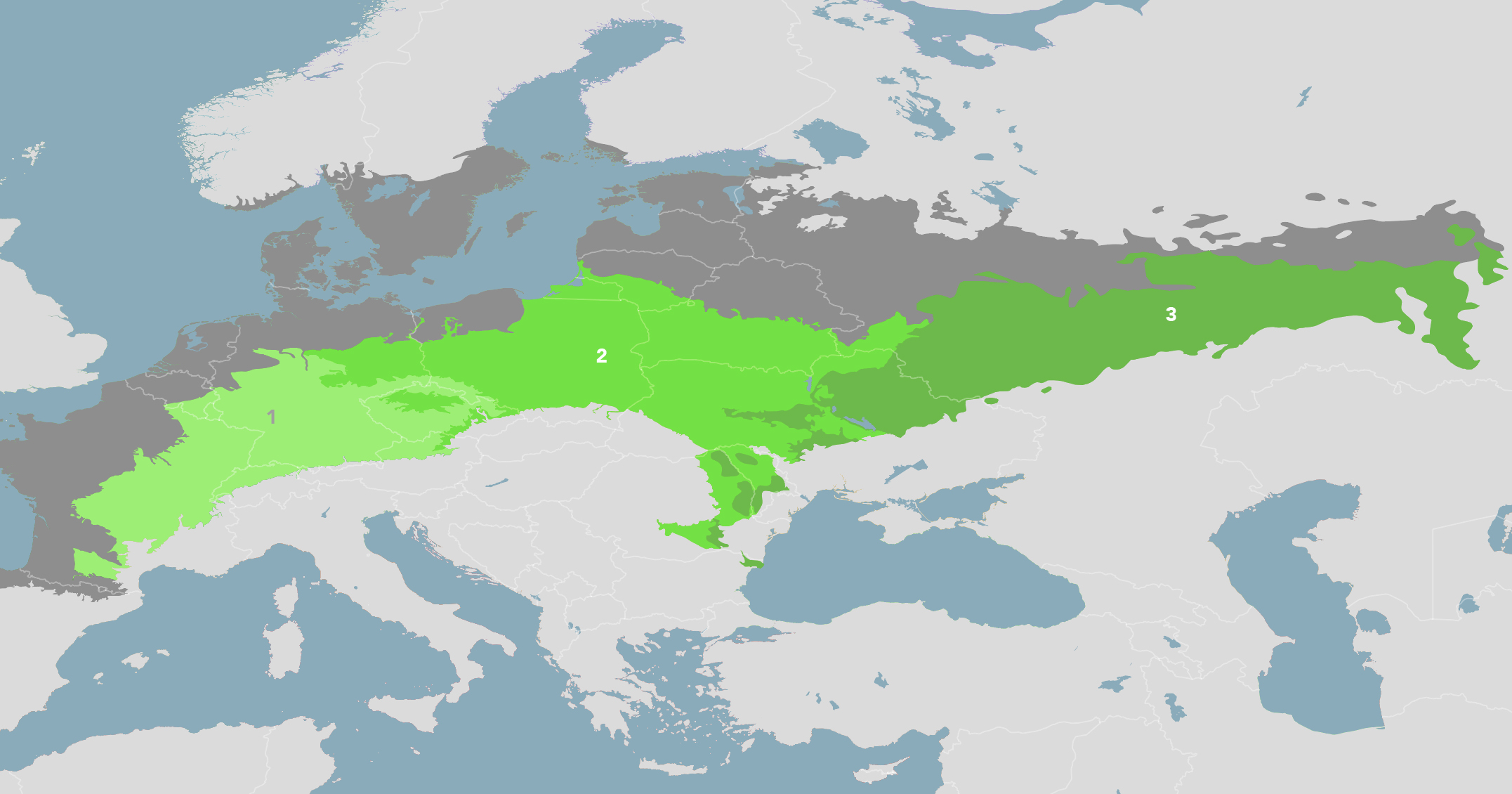Rewilding the mighty European bison with the help of local communities
- Nature Conservation
- Land Conservation
- Iconic Species
- Wildlife
- Mammals
- Greater European Forests
- Western Eurasia Realm
One Earth’s “Species of the Week” series highlights an iconic species that represents the unique biogeography of each of the 185 bioregions of the Earth.
The European bison (Bison bonasus) is the largest European herbivore among the aurochs, the moose, and the reindeer. For the last few thousand years, the wisent – the German name for bison – has inhabited a vast territory across western and eastern Europe, having a notable preference for open steppes over forests.
Multiple changes in the landscape –including large human settlements along rivers and artificial divisions like fences, dams, and roads– led bison populations to decrease and become segregated. These issues, combined with poaching, led to the species’ disappearance in the wild in the 1930s, with only fifty-four animals surviving in zoos.
Ever since that dramatic moment, biologists, veterinarians, breeders, ecologists, and conservation foundations have embarked on a tireless effort to reproduce and reintroduce the wisent.

European bison are the iconic species of the Central European Mixed Forests bioregion (PA12).
Both males and females have horns
The bison’s characteristic feature is the pronounced shoulder hump and short neck, as well as the fact that both females and males have horns that grow over a lifetime. From an evolutionary perspective, this makes sense because both sexes spend time roaming in wide-open environments, so they must defend themselves from predators such as wolves.
Horns project outward and then inward, meaning that bison can seriously harm when tossing their head upwards into the side of an animal. But horns don’t just have a defensive function: they are an extension of the animal’s sinus cavity, meaning that the bison can smell and identify food better thanks to its horns.
Thick coats, quick speeds, and powerful haunches
Their coat is thick in wintertime, with a dark to golden brown tone, and the mane is dense on the hump and the forehead, running down the middle of the neck. The tail is fringed, between 30 and 80 cm (12 to 30 inches) long, and it helps keep flies and other insects away. Their hooves are strong, hard, and sharp, facilitating displacement on various terrains.
Bison males are considerably bulkier and more prominent than females. They measure between 2 to 3.5 meters (6.9 – 11.5 ft), and their height to the shoulder varies between 1.6 and 1.95 meters (5.2 – 6.4 ft). Mature bulls can weigh up to 920 kilograms (2,000 lb), while females reach 540 kilograms (1,190 lb).
The haunches of bison are very powerful, and their strong hindquarters help them run at speeds of 35 mph. At the same time, their evenly distributed weight enables them to pivot quickly in another direction.
While with agile traits, wisents tend to move slowly: their everyday activity is like all ruminants’, foraging most of the time with intermittent resting. This behavior varies through the seasons and during reproductive time, which occurs between August and October.
%20AdobeStock_133423302.jpeg)
Habitat and ecological role as a keystone species
Because of their large size and herding nature, the ideal habitat is open grasslands with slow-flowing rivers and streams where they can drink water and bathe. Occasionally, they use the forest to take shelter in the summer and winter.
The wisent is considered a keystone species that provide multiple ecological benefits. It interacts with many plants and animals, including birds like the Great Tit, which uses its hair to build nests. Grasses, sedges, lichens, and mosses disperse farther when getting stuck on the hooves and fur, while shrubberies and other fruits spread when passed through the digestive tract.
The presence of wisent herds helps maintain a patchwork of over two-hundred flower species that attract bees and other insects. It fertilizes the soil, moves the Earth when bathing in mud holes, and stirs sand banks along the rivers to bathe.
The difference between the European bison (wisent) and the North American bison (buffalo)
In terms of their physical appearance, on average, the wisent is slightly lighter in body mass than the buffalo and is taller at the shoulder. However, the mane on the head, neck, and forequarters is shorter in the wisent than in the buffalo. Finally, the tails and horns of the European bison are longer than those of the American counterpart.
Successful conservation efforts in Belarus and Poland
From twelve so-called ‘founders’ and many fertile females, bison offspring were carefully managed to create herds that could be taken to sanctuaries and national parks. From 1980, twenty-four herds grew to thirty by 2010.
Over a decade later, and thanks to the ongoing rewilding plan, there are about 7,000 individuals, with the largest herds and subpopulations in Belarus and Poland. This number is expected to grow as people from communities become more involved and aware of the ecological importance of the wisent and legislation is passed to facilitate the reintroduction process.
Rewilding wisents across Europe
The IUCN’s Species Survival Group produced the Bison Action Plan in 2004 in collaboration with the European Bison Conservation Centre (EBCC) and others. Overall, it has proven fruitful, as the conservation status of the bison has changed from endangered in 1996 to near threatened in 2020.
If the bison is to succeed in the future, herds must increase in population size and interact more with neighboring herds to diversify and strengthen their genetic pool. That is why wisent biologists and ecologists are working hard to consolidate subpopulations of about 150 animals each. Doing this would additionally help revitalize the mosaic composition of the landscape in the Carpathians and the Bialowieza Forest, as well as in each of the national parks where they are found.
Rewilding Europe is a notable player in this effort. Thanks to the organization, the Rhodope mountains in Bulgaria are seeing bisons grazing freely for the first time since the Middle Ages! They are now working to increase the richness of the Southern Carpathians population in Romania by releasing another hundred individuals soon.
Something exceptionally motivating is that Rewilding Europe is planning on involving people in remote communities across Europe so that they can make a living from nature-based tourism. These efforts may provide a better chance of opening bison corridors between sanctuaries and national parks.
Such initiatives require education, outreach, legislation, and philanthropic support to save one of Europe’s most iconic and essential species.
Explore the Bioregions%20%20AdobeStock_246889383.jpeg?auto=compress%2Cformat&w=1440)


